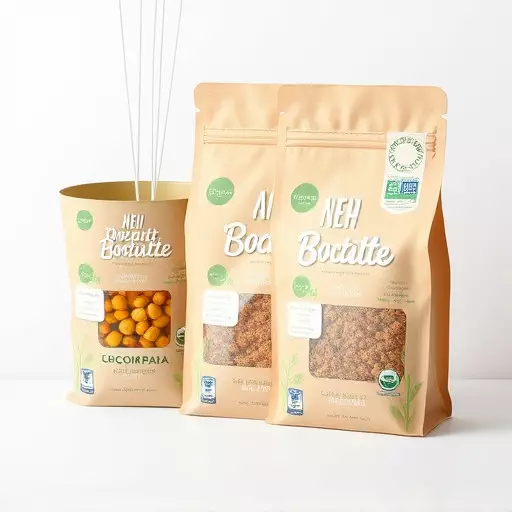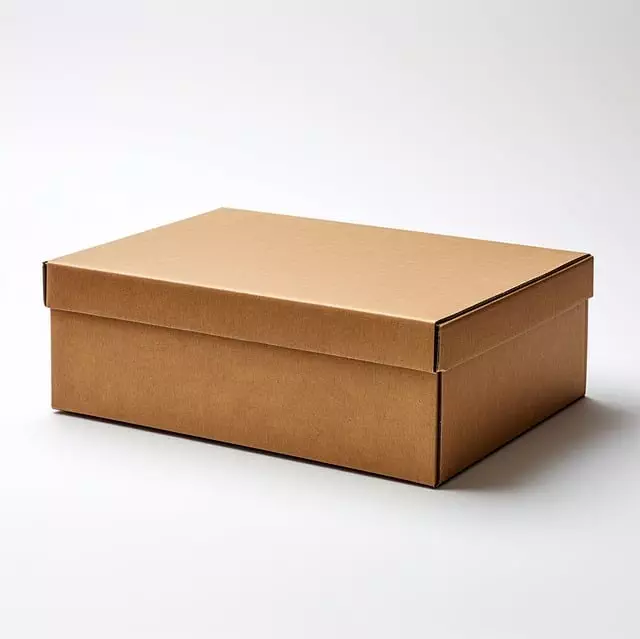Protective product packaging serves as a dual strategy for businesses, ensuring goods' safety during transit while functioning as an impactful marketing tool. Custom product packaging design, leveraging eco-friendly materials like recycled paper and biodegradable plastics, is a powerful differentiator in today's market. This approach fosters brand loyalty by captivating buyers with unique graphics and personalized messaging. The industry prioritizes environmental sustainability alongside aesthetic appeal, with advanced printing technologies enhancing branding on these sustainable packages. Case studies demonstrate successful brand differentiation and customer satisfaction through innovative packaging designs that protect products while reflecting identity. Moving forward, the focus is on durability and sustainability, driven by consumer demand for eco-friendly solutions like plant-based plastics and interactive features.
Protective product packaging plays a pivotal role in ensuring product integrity while enhancing customer experience. In today’s competitive market, understanding the multifaceted benefits of robust packaging is crucial for brands aiming to stand out. This article explores various aspects of protective product packaging design, from the essential role it plays to cutting-edge technologies and eco-friendly alternatives. We delve into custom product packaging strategies that engage customers while uncovering successful case studies, all while peering into future trends shaping sustainable product packaging solutions.
- Understanding Protective Product Packaging: Its Role and Benefits
- Custom Product Packaging: Unlocking Brand Potential and Customer Engagement
- The Impact of Eco-friendly Materials in Modern Packaging Design
- Innovations in Protective Packaging Technologies and Their Applications
- Strategies for Integrating Protection and Aesthetics in Product Packaging
- Case Studies: Success Stories of Effective Protective Product Packaging
- Future Trends Shaping Sustainable and Protective Product Packaging
Understanding Protective Product Packaging: Its Role and Benefits

Protective product packaging plays a pivotal role in ensuring that goods reach consumers safely and intact. Beyond simply shielding products from damage, it serves as an extension of a brand’s identity, enhancing customer experience. Well-designed product packaging design not only protects contents but also captivates buyers, conveying information about the product and its benefits. Custom product packaging allows businesses to tailor their messages, differentiate themselves from competitors, and foster brand loyalty.
The environmental impact of traditional packaging has prompted a growing demand for eco-friendly product packaging solutions. Sustainable materials like recycled paper, biodegradable plastics, and plant-based resins are gaining traction as consumers become more conscious of their ecological footprint. These innovations not only reduce waste but also offer cost advantages in the long run, making protective product packaging both environmentally friendly and economically viable.
Custom Product Packaging: Unlocking Brand Potential and Customer Engagement

Custom product packaging is a powerful tool for brands to differentiate themselves and engage customers on a deeper level. By incorporating unique designs, innovative materials, and personalized messages, custom packaging can transform an unassuming box into a captivating brand ambassador. It allows companies to tell stories, express values, and create memorable experiences that resonate with consumers. For instance, using eco-friendly product packaging not only aligns with growing environmental consciousness but also showcases a commitment to sustainability, fostering goodwill among customers.
This approach goes beyond mere protection; it’s about crafting an emotional connection between the brand and its audience. Through strategic product packaging design, businesses can leave a lasting impression, encouraging repeat purchases and loyalty. Customized elements like intricate graphics, personalized messages, or even interactive features can elevate the unboxing experience, turning a mundane task into a delightful surprise. This strategy is particularly effective in competitive markets where brands strive to stand out and create a unique shopping journey for their customers.
The Impact of Eco-friendly Materials in Modern Packaging Design

In today’s market, where environmental consciousness is on the rise, the use of eco-friendly materials in product packaging design has become a game-changer. Consumers are increasingly demanding sustainable options, and brands are responding by adopting greener practices. Custom product packaging made from biodegradable or recycled sources not only reduces environmental impact but also offers an opportunity to differentiate products in a crowded market. This shift towards eco-friendly product packaging design is not just a trend; it’s a necessary step towards a more sustainable future.
Brands that incorporate natural materials, such as bamboo, paper, and plant-based plastics, into their packaging are attracting environmentally conscious consumers. These materials not only minimize waste but also offer unique aesthetic appeal, allowing brands to create visually appealing custom product packaging. By embracing eco-friendly practices, businesses can foster a positive image, enhance brand loyalty, and stay competitive in an ever-evolving market where product packaging design plays a crucial role in consumer decisions.
Innovations in Protective Packaging Technologies and Their Applications

The realm of protective product packaging has seen a metamorphosis in recent years, with innovations that not only enhance safety but also cater to environmental and aesthetic concerns. In terms of design, custom product packaging is now the norm, allowing manufacturers to create unique solutions tailored to specific products, shapes, and sizes. This personalized approach not only improves product presentation but also offers added protection, ensuring items arrive at their destination in pristine condition.
Eco-friendly product packaging has emerged as a game-changer, with materials such as biodegradable plastics, recycled cardboard, and compostable films gaining traction. These innovations address the pressing need for sustainable solutions, reducing environmental impact and fostering a greener supply chain. Moreover, advancements in printing technologies enable intricate designs and branding on these eco-friendly packages, bridging the gap between functionality and style.
Strategies for Integrating Protection and Aesthetics in Product Packaging

In the realm of product packaging design, achieving a balance between protection and aesthetics is paramount for capturing consumers’ attention in today’s competitive market. Strategic integration involves utilizing innovative materials and creative layouts to enhance both functionality and visual appeal. Custom product packaging plays a pivotal role in this regard, allowing brands to tailor solutions that not only safeguard their products but also reflect the brand’s identity.
Eco-friendly product packaging is another crucial aspect that has gained significant traction. By adopting sustainable materials like recycled paper, biodegradable plastics, and plant-based inks, manufacturers can reduce their environmental footprint while appealing to eco-conscious consumers. These design strategies not only contribute to a greener planet but also ensure that the packaging performs its protective role effectively, thus fostering consumer trust and brand loyalty.
Case Studies: Success Stories of Effective Protective Product Packaging

In the competitive world of retail, effective protective product packaging can be a game-changer. Case studies from various industries highlight the success stories of brands that have utilized innovative product packaging design to enhance customer experience and safeguard their goods. For instance, consider a skincare brand that adopted custom product packaging made from recycled materials, reducing its environmental footprint while appealing to eco-conscious consumers. This strategic move not only aligned with sustainability trends but also increased brand loyalty among environmentally aware customers.
Another compelling example involves a tech startup that designed protective packaging for fragile electronic devices using lightweight, shock-absorbing materials. This approach significantly reduced shipping costs and damage rates, leading to improved customer satisfaction. By combining aesthetics and functionality in their custom product packaging, these brands have not only protected their products but also created a unique brand identity that sets them apart from competitors, ultimately driving sales and fostering long-term customer relationships.
Future Trends Shaping Sustainable and Protective Product Packaging

The future of product packaging is trending towards sustainability and protection, with a growing emphasis on innovative designs that are both eco-friendly and durable. As consumers become more conscious of their environmental impact, brands are responding by adopting custom product packaging solutions that minimize waste and reduce their carbon footprint. Biodegradable materials, such as plant-based plastics and paper, are gaining popularity in the market, offering a sustainable alternative to traditional packaging.
Additionally, advancements in printing technology enable unique and visually appealing custom product packaging designs. This allows brands to stand out on retail shelves while ensuring their packaging effectively communicates key product information. Integrating smart features, like QR codes or digital trackers, into packaging is another emerging trend, providing consumers with enhanced interactivity and brand engagement, as well as enabling companies to gather valuable data for future improvements.


